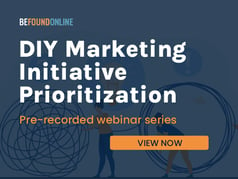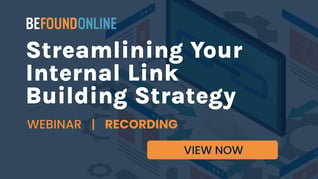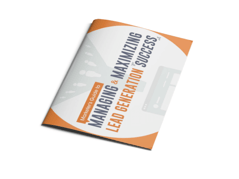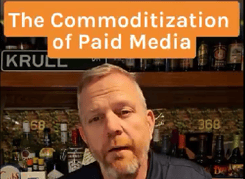6 Ways to Streamline Your Internal Link Building Strategy
March 04, 2022
5 Minute Read

Efficient link building is an integral part of a successful SEO strategy. While everyone is working hard to obtain high-quality backlinks, internal linking doesn’t always get enough attention.
A little over 40% of SEO specialists spend equal time on external and internal link building. The rest tend to underestimate this important marketing tactic.
By digging deeper into internal linking, you won’t just climb higher on the SERPs (Search Engine Result Pages), you can improve UX (user experience), build higher credibility, capitalize on old content, and much more.
Let’s take a closer look at what you can do for your internal link building strategy.
What is Internal Linking for SEO?
An internal link is a link that leads from one page of your website to another. It allows website visitors and search engines crawlers to find content on your website.
The key purpose of internal linking for SEO is to help the search engines find key context about your website’s pages and rank them accordingly.
The two main types of internal links are:
- Contextual links – internal links that are usually placed in the body of the content.
- Navigational links – links that help visitors navigate your website. They can be found in the main menu of the website, in its footer (“about us, “terms of service,” “privacy policy,” and the like), or on a sidebar.
Internal linking and backlinks are the foundation of your link-building strategy. Other linking tactics including cross-linking and outbound linking are complementary to these two, but are a very important part, nevertheless.
Benefits of Using Internal Links
Internal links contribute to your SEO and content marketing tactics. The benefits of implementing a comprehensive internal linking strategy include:
- Transferring link juice – with internal links, you can transfer positive ranking factors from one page to another. This can drive search engine spiders and traffic to your niche pages, thus increasing conversions, building authority, and improving brand awareness.
- Improving user experience – proper internal linking improves UX, which in turn keeps visitors on the website longer and helps push them down the sales funnel. While indirect, such UX is an important Google ranking factor.
- Decreasing the bounce rate – with proper navigational links in place, users can find what they are looking for quickly, thus decreasing your bounce rate. Proper contextual links also keep visitors on your website longer because they are actively clicking through links to find what they need.
Unlike backlinking tactics, internal linking gives you full control over the link number, placement, and quality. This turns these links into a powerful marketing tool.
Streamlining Your Internal Link Building Strategy
While seemingly straightforward at first, internal linking requires a careful strategy. Whether you are starting from scratch or already using internal linking tactics, these tips can help improve your efforts.
1. Build Your Internal Linking Strategy
Your internal link strategy should include the following steps:
- Identify hub/pillar pages – these pages target your main keywords and contain tons of general information about a certain topic. Typically, we’re talking anywhere in the range of 1000 – 3000 words. They can include internal links to niche pages with in-depth content. Hub webpages usually attract the most traffic and have the highest rankings.
- Create topic clusters – using your hub webpage as the starting point, you can find or create niche webpages and add internal links to them. The topic cluster approach improves your linking strategy and drives content marketing efforts.
- Identify authority pages – your authority pages usually generate backlinks (like your homepage!). Use these pages to spread the authority juice to less popular pages. Keep these in the navigation if possible, either header or footer will work.
- Review old content – go back to the old content on your website and look for ways to add internal links.
Each time you create new content for your website, make sure to look for internal linking opportunities.
2. Choose the Right Anchor Text for Your Internal Links
The anchor text for your internal links needs to:
- Be relevant to the page it links to.
- Include a target keyword based on the page it links to.
- Be as concise as possible.
Try to keep the anchor text short but descriptive. Keep in mind that it serves as guidance to both search engines and website visitors. Avoid non-informational anchor text like “click here” as this provides no context to crawlers as to what the next page is about.
3. Use More than One Internal Link
One internal link per page is a lost SEO opportunity. Aim at adding at least three internal links to each page on your website. However, overstuffing content with internal links is also bad. While Google allows roughly 150 links (both internal and external) before it stops crawling, you shouldn’t add more than a couple per paragraph.
Internal link overstuffing makes the text harder to read, which is likely to frustrate the visitor and increase your bounce rate.
A page without any internal links pointing to it is an orphaned page. This means it can’t be crawled or indexed.
4. Avoid the Nofollow Tag
Nofollow is simply a way to add a link to your site and tell web crawlers that you can’t verify the credibility of the linked website. Therefore, if you add the nofollow tag to an internal link, you’re giving Google conflicting signals. It’s your own website, so it has to be trustworthy!
While these nofollow links can have some value for your outbound linking strategy, they don’t do anything for your internal linking tactics.
5. Fix Broken Links
Broken links are terrible for your website. Revamping your interlinking strategy starts with auditing your website links.
Update the broken link’s URL with a URL that points to a live webpage. On the other hand, if the link redirects, replace the link with the final destination of that redirect. Doing both of these will cut down on UX problems, increase site speed, and pass more link equity throughout your priority pages.
6. Check the Link Depth and Overall Site Structure
If a visitor needs to click more than three links to access an important page of your website, it’s too deep. Consider adjusting your internal linking structure to make access to this page easier.
Excessive link depth could cause Google to consider a webpage irrelevant and avoid crawling it too often. Meanwhile, since the most authoritative page of your website is usually the homepage, keeping important pages close to it is effective.
Many people think that a website’s structure is determined based on the folders like /blog/ or /resources/. However, this is not always the case. Really, internal links determine your website’s structure since this is how Google and other search engines find your pages. Make sure that your internal links are reflective of your folder structure and vice versa.
The Takeaway
Internal linking affects your SEO and content marketing strategy. With the right approach to internal linking tactics, you can achieve higher rankings and many other marketing goals.If you need help implementing an effective internal linking strategy or revamping your existing linking efforts, we are here to help.

The BFO Team
Here at BFO, we're always striving to bring you the latest and greatest in digital marketing insights and education. We're not ones to brag, but we've been lucky enough to be featured in all sorts of fancy publications and media outlets, strutting our stuff and showing off our industry expertise.
CATEGORIES
SUBSCRIBE TO OUR BLOG
Stay up to date with the latest industry best practices in digital marketing!























.png?width=339&height=179&name=Webinar%20Banner%20(1).png)



.png?width=339&height=179&name=July%20Webinar%20(Newsletter).png)

.png?width=339&height=179&name=Webinar%20Banner-April-02%20(1).png)
%20(4).png?width=339&height=179&name=Webinar%20Banner-May-02%20(1)%20(4).png)




.png?width=339&height=179&name=March%202023%20Webinar%20Ad%20(autoresponder).png)






























































